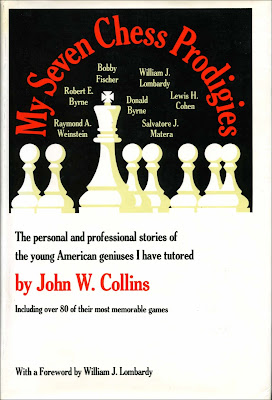Standard reference works for chess bibliophiles
Below I give details of the main reference works for researching collectable chess books. These are predominantly in English although all but three can be used for researching publications in all languages.
In each case I give the abbreviated title by which these works will be frequently referred to in these articles and this information is included on a separate page accessible from a tab at the top of this page.
Betts
CHESS: An Annotated Bibliography of Works Published in the English Language 1850-1968 compiled by Douglas A. Betts, published by G.K.Hall & Co., Boston, Massachusetts, 1974.
Reprinted
in smaller format by The Chess Player, Nottingham, 1988 and by Moravian
Chess, Olomouc, Czech Republic, 2005. Only the Moravian edition is now
readily available.
The standard bibliography of English language chess publications from 1850 to 1968 and my favourite book, about which I will write a detailed article later.
Lusis
CHESS: An annotated bibliography 1969-1988 by Andy Lusis, published by Mansell Publishing Limited, London, 1991. Difficult to find and expensive.
This book continues the bibliography of English language chess publications from 1969 to 1988 and includes considerably more titles in its 20 year coverage than Betts records for the previous 120 years.
Chess Texts
Chess Texts in the English Language printed before 1850, An annotated bibliography compiled by Ken Whyld and Chris Ravilious, published by Moravian Chess, Olomouc, Czech Republic, [2003]. Readily obtainable.
Comprehensive coverage of publications from 1475 to 1849 with a wider scope than Betts or Lusis, as various games compilations, e.g. Hoyle's Games, and many articles from non-chess publications have been included.
L/N
Bibliotheca Van der Linde-Niemeijeriana: A Catalogue of the Chess Collection in the Royal Library, published in The Hague, 1955.
 Reprinted by L'Esprit, Rosmalen, 1988. Only this reprint is easily obtainable.
Reprinted by L'Esprit, Rosmalen, 1988. Only this reprint is easily obtainable.
This book records the holdings in The Royal Library up to the early 1950's, however, the collection is continually growing and an up to date catalogue is available online at www.kb.nl
Chess book catalogues etc. occasionally state `not in L/N´. This usually means that the item referred to is not in the published Catalogue of the Royal Library, however, the item could very well be included in the up to date online catalogue.
Aucta
Bibliotheca Van der Linde-Niemeijeriana aucta et de novo descripta: A catalogue of the collection in the Royal Library, The Hague, Volume I. Chess: Bibliography and History, compiled by K.W.Kruijswijk, published by Government Printing Office, The Hague, 1974.
Aucta has become the accepted abbreviation for this work which records, in much greater detail than in L/N, the holdings on chess bibliography and history up to 1972. There are 1,300 entries compared with only 336 on bibliography and history in L/N. Unfortunately no further volumes have been published. Readily available.
van der Linde
Geschichte und Litteratur des Schachspiels, by Antonius van der Linde, published by Julius Springer, Berlin, 1874. 2 Volumes.
Reprinted with the slightly amended title Geschichte und Literatur des Schachspiels, by Edition Olms, Zurich, 1981 with the 2 volumes in one.
Both of these editions are very hard to find, but print-on-demand copies are available.
The best work on chess history and literature when first published in 1874 and still an essential aid today. Although I understand very little German I find this a valuable reference source.
Murray
A History of Chess by H.J.R.Murray, published by The Clarendon Press, Oxford, 1913.
Reprinted from corrected sheets by The Oxford University Press in 1962 and 1969, and later reprints by other publishers are readily available.
The standard work in the English language
on the early history of chess, with considerable information about
chess writers and their works. Most later writers have borrowed heavily from Murray.
Chess Personalia
Chess Personalia: A Biobibliography compiled and edited by Jeremy Gaige, published by McFarland & Company, Jefferson and London, 1987.
Published as a paperback by McFarland in 2005, readily obtainable but usually expensive, try chessbooks.co.uk.
Includes basic, but reliable, biographical details of around 14,000 chess personalia with references to further information sources about each subject, and an index of obituaries in The British Chess Magazine from 1881 to 1986.
This is an indispensable research aid.
Oxford Companion
The Oxford Companion to Chess by David Hooper and Kenneth Whyld, published by Oxford University Press, Oxford, 1984.
Paperback edition with corrections issued by Oxford University Press in 1987 and reprinted in 1988.

 Second enlarged edition published by Oxford University Press in 1992 and an updated paperback edition published in 1996. All editions are easily obtainable.
Second enlarged edition published by Oxford University Press in 1992 and an updated paperback edition published in 1996. All editions are easily obtainable.
Eales
Chess: The History of a Game by Richard Eales, published by Batsford Academic and Educational, London, 1985.
Reprinted by Hardinge Simpole in 2002, both editions easily obtainable.
Eales includes a substantial amount of information on chess writers and their works, especially on the early chess authors, and also has an eleven page essay on chess bibliography.
Chess Periodicals
Chess Periodicals: An Annotated International Bibliography, 1836-2008 by Gino Di Felice, published by McFarland & Company, Inc., Jefferson and London, 2010.
This book is sometimes referred to as Di Felice but I will refer to it as Chess Periodicals to distinguish this work from Di Felice's series of Chess Results books.
Includes details of 3,163 chess periodical publications including magazines, newsletters, yearbooks, directories, handbooks etc. from around the world, listed alphabetically, with a General Index and Index by Country.
There are many other reference books, some of which I may add to the list in due course, but these are the works that I find most useful.
© Michael Clapham 2016




























































